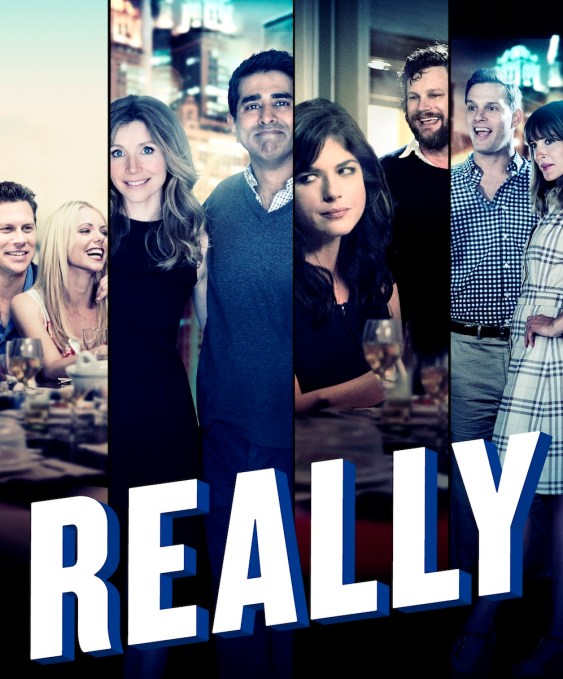Editor’s note: Jay Chandrasekhar is an actor, comedian, writer and director best known for his work with the sketch comedy group Broken Lizard and for directing and starring in films such as Super Troopers, Club Dread, and Beerfest.
On January 26, 1979, “The Dukes of Hazzard” television show premiered on CBS on the East Coast. The show was poorly reviewed and, worse still, the TV ratings were just okay. As the legend goes, the president of CBS, who was in New York that night, saw the show for the first time and was appalled by its lack of quality. He immediately called his executives in Los Angeles, telling them to yank the show for the West Coast runs. But he was too late.
It was already showing in Chicago (and the greater Midwest), and what happened next is show-business history. Unlike the East Coast, the ratings in Chicago and the Midwest were good. Really good. Then Colorado and California followed with even bigger ratings. The CBS president smartly backed down, and the “The Dukes of Hazzard” went on to run for six very lucrative seasons.
Had the CBS boss successfully cancelled “Dukes” after its East Coast run, millions of dollars would have been lost, hundreds of stunt men would have been out of jobs, and billions of teenage boys (who worshiped Catherine Bach’s style of shorts) would have had a lot more bottled up energy.
What’s the lesson? Maybe, just maybe, studio executives and TV reviewers shouldn’t be the only people who decide whether something should succeed. My own film, “Super Troopers,” which was voted funniest movie of the decade by 2010 Huffington Post readers (ahem), got only a 43 percent Fresh (positive) rating from the reviewers on Rotten Tomatoes. We’re talking about fewer than 200 people. To put it more bluntly, if it were up to this small group of “movie experts,” “Super Troopers” would have failed. Luckily for me, audience reaction and word of mouth trumped the experts, and the movie went on to be a hit.
Entering that debate is Amazon.com. Rather than go with the old model of letting TV executives and focus groups choose which shows they’re going to program, Amazon has decided to radically change the game and let the audience decide which show it wants to make the cut.
Here’s how the old model works:
- A writer pitches an idea for a new show to a network.
- The network buys the idea, and the writer then gets paid to write the first episode (the pilot).
- The executives read all of the pilot scripts they commissioned, and choose a fraction of them that will be produced (filmed).
- The executives watch the finished pilots, focus test them with a small number of professional/paid testers, and then combine their own opinions with the viewpoints of the professional testers, and choose the shows they’re going to order full seasons of.
The key point to consider here is that the network is paying a person to watch and rate their shows. This professional rater has not expressed an interest in the particular show because of, say, the idea or the cast. For example, they’re being paid to review X cop show, and they’re going to do it even if they don’t like cop shows.
The problem is we don’t watch TV this way. We only watch shows we’re interested in. For example, I am interested in cop dramas, so I’ve watched “The Wire” and “True Detective.” I’m not interested in shows about teen pop stars, so I haven’t watched “Hannah Montana.” But the paid rater doesn’t have this choice. He has to rate both “True Detective” and “Hanna Montana.” If you paid me to rate “Hannah Montana” (I have actually seen it), I wouldn’t rate it well, because it’s not my kind of show, not because it’s not good. As you can imagine, this isn’t the most efficient way to know what your target audience thinks of your show.
The most famous example is “Seinfeld.” When NBC tested the show, it tested very poorly with a group of professional raters who probably didn’t get what the “show about nothing” was all about. When NBC executives saw the low ratings, they stuck it in a lousy time slot, assuming it would die quietly. Again, the rest is history.
In the same way that Amazon changed retail (with a spirit of creative destruction), it has decided to use its massive user base to more honestly and accurately rate TV shows.
Steps 1, 2 and 3 above are the same for how they choose which pilot scripts to buy and film. But rather than pay small numbers of jaded professional raters to test their finished pilots, Amazon released the five shows for free to anyone who shows up on its site. And these people are showing up because they’ve heard about and are interested in Amazon’s new batch of shows. These viewers are used to rating products on Amazon, so the jump to TV shows is nothing at all. For the most part, they’re choosing to watch and rate only the specific shows they’re interested in. They’re not being paid, so they’re not jaded.
The five new pilots that Amazon released on August 28 for public review are “Hysteria,” “The Cosmopolitans,” “Red Oaks,” “Hand of God,” and my show, “Really,” a high-brow comedy for adults that stars Sarah Chalke, Selma Blair, Hayes MacArthur, Lindsay Sloane, Luka Jones, Travis Schuldt, Rob Delaney and myself. We play four hard-charging suburban Chicago couples who are grasping onto our dwindling youth. Ideally, the tone is real, and the content is edgy, similar to what you’d see on HBO. Yes, there’s swearing and nudity. The show is meant to be a smart, honest and modern take on the half-hour comedy.
Sound interesting? If so, go to Amazon.com, watch the shows and rate them. This is your chance to tell Amazon what you want to watch.

